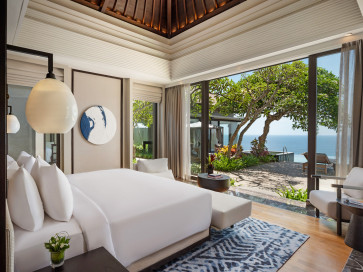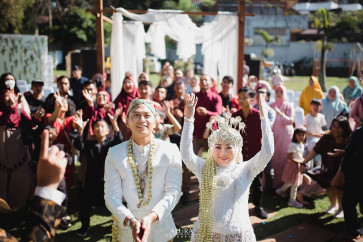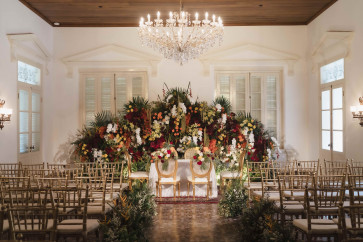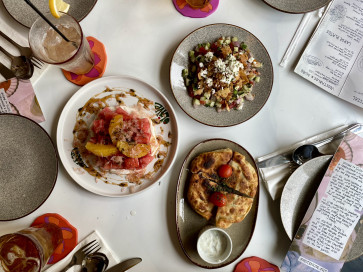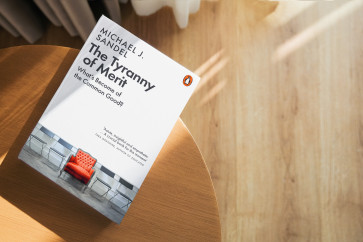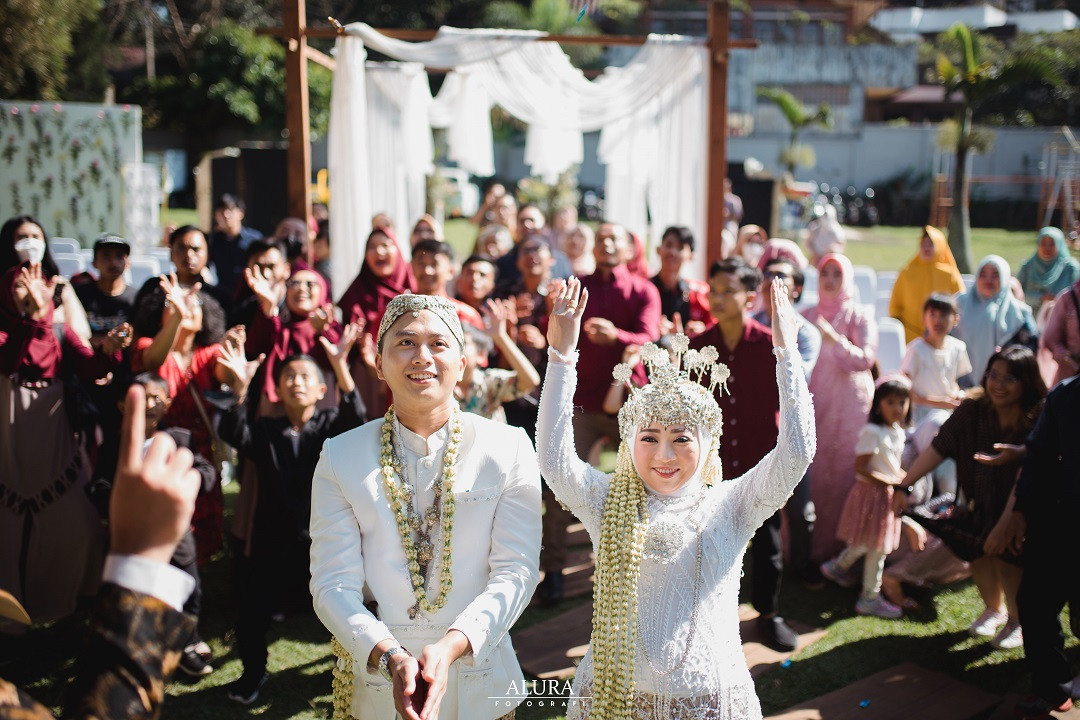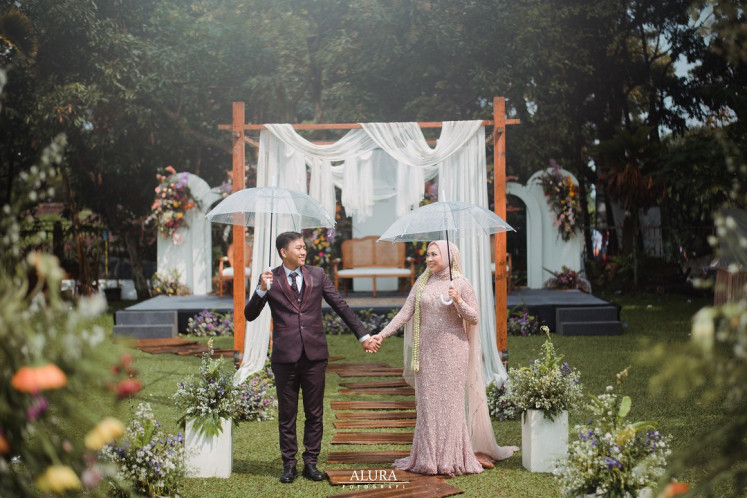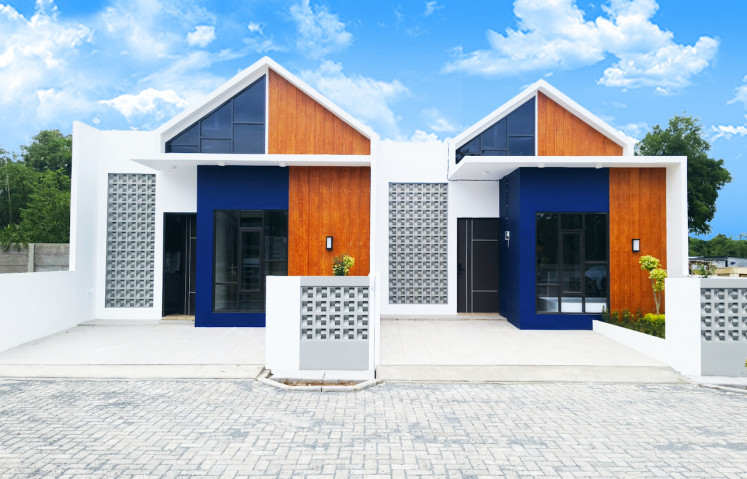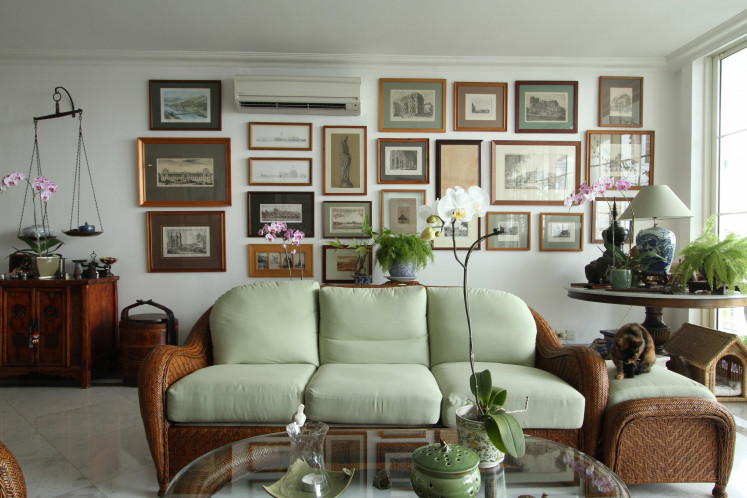I’ve finally reached the age where my friends are getting married. But the weddings I’ve attended lately aren’t quite what I imagined.
Gone are the sprawling ballrooms of my childhood memories, replaced by intimate garden receptions and curated decor that feel deeply personal. Souvenirs are quirky and often handmade, reflecting the newlyweds’ shared interests rather than their families’ social stature. Guest lists are shorter.
At one wedding, there wasn’t even a pelaminan, the customary wedding stage where guests line up to offer congratulations to the wedded couple, flanked by their in-laws. Instead, the bride and groom went from table to table, greeting their guests in person.
These seemingly small changes all point to a shift: Indonesian couples are reclaiming weddings as personal celebrations rather than public spectacles. They’re taking their time, choosing meaning over magnitude and focusing on what truly matters.
More personal weddings
Arif Malik, founder and CEO of Seatap Wedding, believes the answer lays in a generational shift.

Thank you!
For signing up to our newsletter.
Please check your email for your newsletter subscription.
“Back when we first started in 2018, weddings typically had huge scales [with] a minimum of 1,000 guests, sometimes up to 3,000,” he recalled.
“Our clients from that era prioritized grandeur. Now, prospective couples are more conscious and sensitive about the actual value their money can generate.”
He credits the COVID-19 pandemic for recalibrating expectations to smaller, more personal ceremonies as the norm: Intimate is the new trend.
(Seatap Wedding)
Another crucial factor is that some couples are funding their weddings on their own, without financial support from their families.
That shift has moved ceremonies away from lavish ballrooms and to unconventional venues, such as cliffside cafés, outdoor restaurants and museums, even libraries.
“They want their own voice in the celebration, but they can’t allocate an insane budget,” Arif said. “So the demographic naturally leans toward intimacy.”
Chita Safira, chief planner at Senyum Manis Pengantin (@senyumanis.wedding), a wedding planning service launched in 2024, echoed this sentiment.
“Our clients want a personal and customized experience. It’s rare not to find clients who just want a standard, cultural template. They want their own identities showcased,” she said.
From invitations and wedding apparel to souvenirs, couples are involved in every detail, even their guest list, which are also getting tighter.
“The bride and groom want to have fun, so the invitation list narrows to the most important people,” Chita added.
“Of course parents still want to invite everyone, but most couples split the event: a traditional morning ceremony, followed by a relaxed evening celebration.”
Tradition, it seems, isn’t being discarded. It’s simply being adapted and redesigned.
“One client wore a kebaya [traditional blouse] but styled it with modern accessories. She still wanted to wear a traditional dress, just with her own flair,” Arif said.
Down the aisle, reimagined
Today’s weddings are also more financially flexible than ever.
Vendors are adapting to tighter budgets and shifting priorities, offering modular services that allow couples to put their money where it matters the most, without breaking the bank (too much).
“In our experience, a proper intimate wedding with around 100 to 200 guests can be done for about Rp 100 million [US$6,000],” said Mia Ali, chief of experience at Senyum Manis Pengantin.
“That includes decorations, catering and a mini garden venue, for example. It all depends on vendor choices, but a mid-scale wedding could go up to Rp 250 million,” she added.
Arif acknowledges that the market has matured, even as weddings have gone down overall as the younger generation delays or foregoes nuptials completely, whether due to financial considerations or a shifting view on marriage.
The number of marriages nationwide has gone down from 2.02 million in 2018 to 1.79 million in 2020, and then to around 1.47 million last year.
“Even though the total number of weddings is decreasing, their quality and variety are increasing,” Arif said.
“There isn't a fixed benchmark for a ‘proper’ wedding budget anymore.”
In other words, weddings might be shrinking, but they’re also getting smarter. They’re becoming more accessible as betrothed couples design experiences that feel authentic, intentional and financially doable.
With the current generation’s different values, like priorities, practicality and personalization, the trend is likely here to stay.
So while your dream wedding may still require investment, it’ll be for one that feels truly and uniquely yours.
Aqraa Sagir is a writer for The Jakarta Post's Creative Desk. He’s chronically online in the hope it would be a useful asset for the job.







